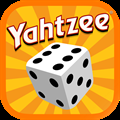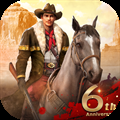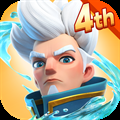
Introduction
The Rune Giant has officially made its debut in Clash Royale, offering a fresh and exciting strategic option for players to explore and incorporate into their decks. This new Epic card, which can be unlocked in the Jungle Arena (Arena 9), introduces a unique combination of power, versatility, and support capabilities, making it a highly valuable addition to any player’s arsenal. The Clash Royale Rune Giant brings something new to the table with its ability to enhance the damage output of nearby troops, making it a powerful support unit while still being a durable tank that can absorb damage for your other troops.
As part of its special launch promotion, players were given the chance to claim one Rune Giant for free in the shop until January 17, 2025, providing an excellent opportunity to try out this card without spending any resources. Whether you’re engaged in high-stakes battles or working your way up the ladder, mastering the Clash Royale Rune Giant can give you a significant strategic advantage, allowing you to dominate your opponents with well-timed buffs and powerful synergies. This guide will walk you through all the essential tips and strategies to make the most out of this new addition and help you use the Rune Giant to its full potential in various scenarios.
Rune Giant Overview
The Rune Giant is an Epic card in Clash Royale that costs 4 elixir to deploy, making it a relatively affordable and versatile option for your deck. As a ground unit, it targets only buildings and moves at a medium speed, giving it the durability to withstand enemy attacks while advancing toward enemy structures. With a solid 2803 hitpoints at tournament standard, the Rune Giant can soak up a significant amount of damage, making it a reliable presence on the battlefield.
At level 11, it deals 120 damage with an attack speed of 1.5 seconds, allowing it to consistently chip away at enemy buildings. In addition to its basic damage, the Rune Giant boasts bonus damage of 220, which further increases its value as a tank. What truly sets the Rune Giant apart, however, is its unique ability to enchant friendly troops.
The Rune Giant can enchant up to two friendly troops at a time, boosting their damage output with every third attack. This makes the Rune Giant primarily a support unit rather than a direct damage dealer, and its value lies in enhancing the power of other troops rather than dealing damage on its own. Since it does not target enemy troops, the Rune Giant excels when paired with fast-attacking or multi-shot troops that can take advantage of its damage amplification.
To maximize its potential, careful selection of supporting troops is crucial—whether it’s a fast-hitting Dart Goblin, a Hunter with close-range damage, or other troops with high attack speeds, the Rune Giant can significantly boost their effectiveness, making it a powerful tool in your overall strategy. By focusing on buffing your other units rather than relying on the Rune Giant for direct damage, you can create powerful synergies that overwhelm your opponent.
Ability of Rune Giant
The Rune Giant has a unique Enchant ability that allows it to buff the two closest friendly troops, increasing their damage with every third hit. This buff does not apply to area-of-effect (AOE) abilities, nor does it affect buildings such as the X-Bow or Mortar. The Rune Giant’s enchantment enhances the third shot of each troop, making it especially useful for troops that attack quickly. To maximize the Rune Giant’s potential, it’s best to pair it with fast-attacking troops or those that fire multiple projectiles. Units like the Dart Goblin, Firecracker, and Hunter can benefit from the Rune Giant’s ability, utilizing the damage boost to deal even more devastating blows.
How to Use the Rune Giant Effectively
To use the Rune Giant effectively, it’s crucial to pair it with fast-attacking troops like the Dart Goblin, Musketeer, or Hunter. The Rune Giant works especially well with troops that fire multiple shots, such as the Hunter, because all shots benefit from the enchantment, dealing massive damage. Troops with a fast hit speed, like the Dart Goblin, take full advantage of the Rune Giant’s enchantment, as the bonus damage triggers more frequently. Units that can hit multiple times in a single attack are ideal, as each hit benefits from the damage boost.
In addition to its buffing role, the Rune Giant can be used as a distraction. It can serve as a frontline tank, drawing enemy fire and protecting your damage dealers. By positioning the Rune Giant in front of your high-damage troops, you can ensure that the buffed units have a better chance of dealing significant damage without being interrupted by enemy forces.
With its 4 elixir cost, the Rune Giant is easy to cycle and can be integrated into a variety of pushes. However, it’s essential to consider placement carefully to ensure that the troops you want to buff are within the Rune Giant’s range. Proper positioning will maximize the effectiveness of the Rune Giant’s enchantment, especially when placed strategically in front of your damage-dealing units.
Deck Combinations
When building a deck around the Rune Giant, there are several powerful combinations to consider, each with its own playstyle and strategy:
Royal Giant Beatdown: This deck includes the Royal Giant, Rune Giant, Fisherman, Hunter, Skeletons, Electro Spirit, Lightning, and The Log. The Royal Giant and Rune Giant work together to apply constant pressure, while the Hunter and Fisherman provide defense and utility. Lightning clears out enemy support troops and The Log helps control swarm units.
Hog Cycle: Featuring Rune Giant, Hog Rider, Firecracker, Skeletons, Ice Spirit, Cannon, Earthquake, and The Log, this deck focuses on fast-paced attacks with the Hog Rider, while Firecracker deals consistent damage. Earthquake is used to clear buildings that could block the Hog Rider, making it easier to get damage on enemy towers.
Goblinstein Beatdown: This deck combines Rune Giant, Mortar, Miner, Goblinstein, Cannon Cart, Bats, Lightning, and The Log. It focuses on a combination of Miner and Mortar for chip damage, while the Rune Giant supports your Goblinstein in dealing significant damage.
Goblin Giant Beatdown: With Rune Giant, Goblin Giant, PEKKA, Fisherman, Hunter, Bomber, Rage, and Arrows, this deck is built around strong Goblin Giant and Rune Giant synergy, where PEKKA defends and sets up for a powerful counterattack.
Rune Giant with Three Musketeers: This combination features Rune Giant, Royal Hogs, Three Musketeers, Royal Ghost, Hunter, Bats, Skeletons, and Barbarian Barrel. The deck focuses on creating positive elixir trades and using Three Musketeers for powerful pushes while defending with low-cost cards.
Deck One: A balanced deck with Rune Giant, Guards, Firecracker, Inferno Dragon, Arrows, Rage, Goblin Giant, and Knight. This deck is effective against various types of opponents due to its solid defense and strong counterattacks.
Deck Two: Featuring Rune Giant, Guards, Fisherman, Electro Dragon, Arrows, Dart Goblin, Goblin Giant, and Hunter, this deck packs a punch with both Rune Giant and Goblin Giant, offering great offensive and defensive synergy.
Deck Three: With Rune Giant, Goblin Gang, Giant Snowball, Log, Archers, Dart Goblin, X-Bow, and Knight, this deck focuses on using the X-Bow as the main win condition, while other troops provide support and defense.
Goblin Giant Cannon Cart: This deck includes Evo Goblin Giant, Evo Bats, Rage, Arrows, Rune Giant, Lumberjack, Cannon Cart, and Elixir Collector. It’s a versatile deck with strong defensive capabilities and solid offense, making it difficult to counter.
Battle Ram 3M: Featuring Evo Zap, Evo Battle Ram, Bandit, Royal Ghost, Hunter, Rune Giant, Elixir Collector, and Three Musketeers, this deck plays similarly to a P.E.K.K.A Bridge Spam deck, focusing on high-pressure attacks and strong counterpushing with Three Musketeers.
Hog EQ Firecracker: This deck includes Evo Skeletons, Evo Firecracker, Ice Spirit, The Log, Earthquake, Cannon, Rune Giant, and Hog Rider. The Rune Giant’s Enchant ability enhances the Firecracker, allowing her to deal massive damage with each shot as she splashes on her third hit, further supporting the Hog Rider’s push.
When building a deck around the Rune Giant, there are a few important synergies to keep in mind:
Hunter and Rune Giant Combination: The Hunter benefits greatly from the Rune Giant’s enchantment, especially when facing powerful troops like Mega Knight, allowing it to deal massive damage and eliminate threats in one shot.
Rune Giant, Goblin Giant, and Hunter: This combination is incredibly strong, as the Hunter and Rune Giant work together to deal heavy damage while the Goblin Giant serves as a tank. This synergy can overwhelm many opponents.
Additionally, some of these decks make it easier to activate the King Tower early in the game, providing a strong defensive advantage throughout the match.
Important Considerations
When using the Rune Giant in Clash Royale, it’s crucial to understand its role in your deck. The Rune Giant is primarily a support unit and a tank, not a primary damage dealer. Its main purpose is to buff nearby troops and draw enemy fire, allowing your other units to focus on dealing damage while the Rune Giant absorbs hits. This makes it essential to use the Rune Giant strategically, positioning it in front of your damage-dealing troops to keep them safe and empowered.
However, it’s also important to be aware of the Rune Giant’s weaknesses. Spells like Arrows or Poison can significantly weaken the Rune Giant and any troops it has buffed, so you must be cautious of these when placing it on the battlefield. Additionally, since the Rune Giant doesn’t target troops, it is vulnerable to swarm units if not properly supported by other troops or spells.
Mastering the timing of when to deploy the Rune Giant is key. Deploying it at the right moment ensures that your buffed troops can engage the enemy effectively and take full advantage of the damage boost. Additionally, it’s important to adapt to your opponent’s deck and adjust your strategy based on their cards. Consider pairing the Rune Giant with different troops depending on the matchup, as its effectiveness can vary greatly based on your opponent’s strategy.
To maximize the Rune Giant’s potential, you should protect your supporting troops. The Rune Giant excels when paired with cards that can survive in the heat of battle, such as high-damage, durable units. Equally important is to avoid predictability in your plays. Always try to keep your opponent guessing about your next move, as predictability can easily be exploited by experienced players.
Elixir management is also critical when using the Rune Giant. Its relatively low elixir cost and high health can be deceptive—while it’s tempting to cycle it often, make sure you don’t overcommit and leave yourself vulnerable to counterattacks. Finally, keep in mind the importance of countering the counter. If your opponent anticipates the Rune Giant’s movements and prepares a strong counter, be ready to adjust your strategy or support your Rune Giant with additional cards.
Advanced Strategies and Tips
For players looking to maximize the potential of the Rune Giant in Clash Royale, implementing advanced strategies can make all the difference in outplaying your opponent. One powerful tactic is Double Lane Pressure. Splitting the Rune Giant and other tanks across both lanes forces your opponent to split their attention and resources. This creates a challenge for them to defend effectively, and you can capitalize on their lack of focus by building up strong pushes in both lanes.
Another useful strategy is King Tower Activation. The Rune Giant works well in decks that can activate the King Tower early, providing an additional defensive advantage. Pairing the Rune Giant with a Fisherman can help pull the Giant into the center of the arena, triggering the King Tower to engage and helping you defend subsequent pushes more effectively.
When facing specific defensive structures, Baiting can be an effective strategy. For example, when facing an Inferno Tower, you can use the Rune Giant to bait out the tower’s damage, allowing you to follow up with another powerful troop like the Goblin Giant Evolution for a counter-push. This forces your opponent to use their defensive resources on the Rune Giant, leaving them vulnerable to other attacks.
Adapting your playstyle based on the situation is key, so consider Deck Variety. Think about whether you should be combining troops for a concentrated push or splitting them to apply pressure across both lanes. Playing patiently and cycling cards from the back can help you manage elixir efficiently while keeping your defense strong. It’s also important to note that some decks may be more effective in regular gameplay than in challenges. In challenges, cards like Dark Goblin, Firecracker, or Hunter can be more prevalent, and Monk is a good counter to these cards.
Effective Synergies are critical to using the Rune Giant. The Rune Giant buffs the third attack of the troops it enchants, so pairing it with fast attackers like Goblin Giant and Hunter can result in massive damage. Additionally, Evolved Archers can be very effective against flying troops like Balloon, as the Rune Giant’s buff will boost their damage output, making them a significant threat.
Another key tip is to incorporate Mind Games into your strategy. Staying unpredictable will prevent your opponent from easily reading your next move. This can throw off their defensive rhythm and create openings for successful pushes.
To counter the Rune Giant, focus on eliminating the support troops behind it. If you can take down the support cards—whether it’s Hunter, Firecracker, or Dart Goblin—the Rune Giant becomes much easier to handle, as it relies on its buffed troops to deal damage. By removing these supporting units, the Rune Giant is left as a simple tank with limited offensive potential.
Finally, consider the Card Level. A high-level Rune Giant, especially at level 15, can be devastating when paired with the bonus damage from its enchant ability. Be aware of the damage potential of higher-level cards and plan your strategies accordingly to avoid being overwhelmed by their enhanced power.
By mastering these strategies and keeping these considerations in mind, you can use the Rune Giant effectively in a wide variety of situations, keeping your opponent on their toes and controlling the pace of the match.
Conclusion
The Rune Giant can be a meta-shifting card in Clash Royale due to its powerful damage amplification abilities. By understanding its role as a support unit and tank, you can use the Rune Giant to enhance your gameplay significantly. It excels when paired with fast-attacking troops, allowing its buffs to boost damage output rapidly. Protecting your supporting troops is also essential, as the Rune Giant’s effectiveness relies on the units it empowers to deal damage.
Experimenting with different deck combinations is key to finding the best fit for your playstyle. For example, a combination of Rune Giant, Goblin Giant, and Hunter can be particularly effective, creating a balanced and formidable offensive. However, you must also be aware of the Rune Giant’s weaknesses, such as its vulnerability to spells and swarms. Without proper support, the buff dissipates when the Rune Giant dies, making it crucial to position and protect it well.
Mastering the timing of the Rune Giant’s deployment is vital, as is being able to adapt to your opponent’s deck. Implementing strategies like double lane pressure, baiting opponents, and activating the King Tower can provide additional strategic advantages. In battle, being unpredictable and keeping your opponent guessing will often lead to better results.
While confidence is important, be cautious of becoming overconfident when using the Rune Giant. A number of players consider the Rune Giant to be “absolutely busted”, thanks to its ability to turn the tide of battle. By considering the strategies and tips outlined in this guide, you can master the Rune Giant and use it effectively to dominate in Clash Royale.













